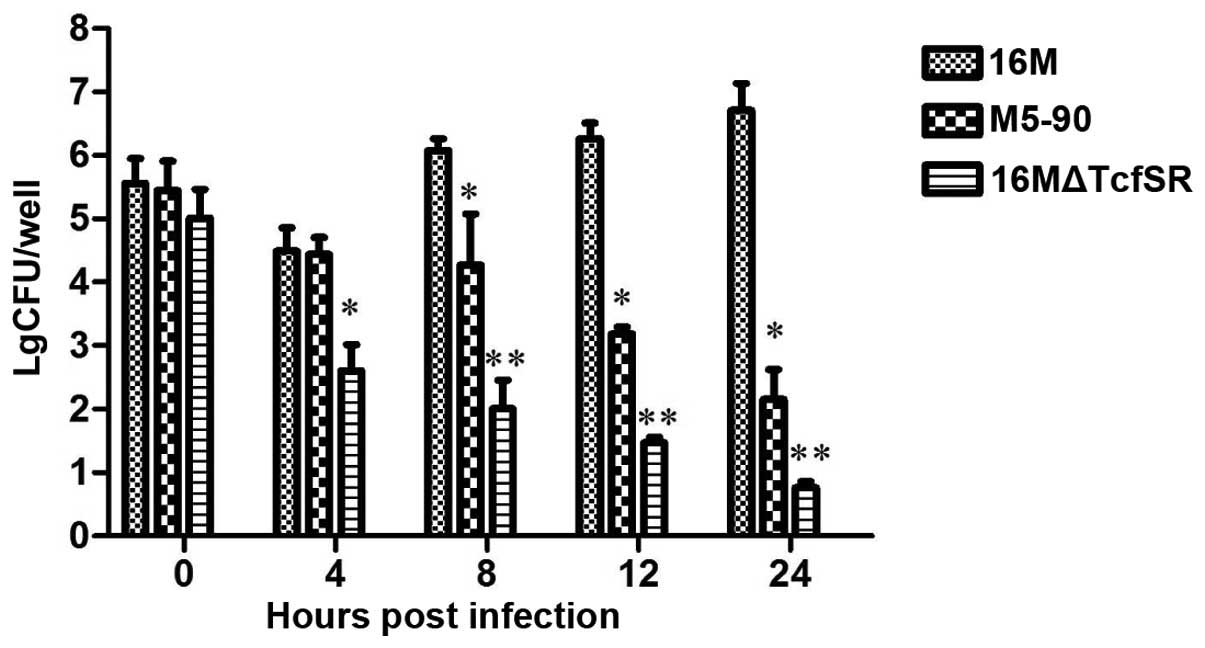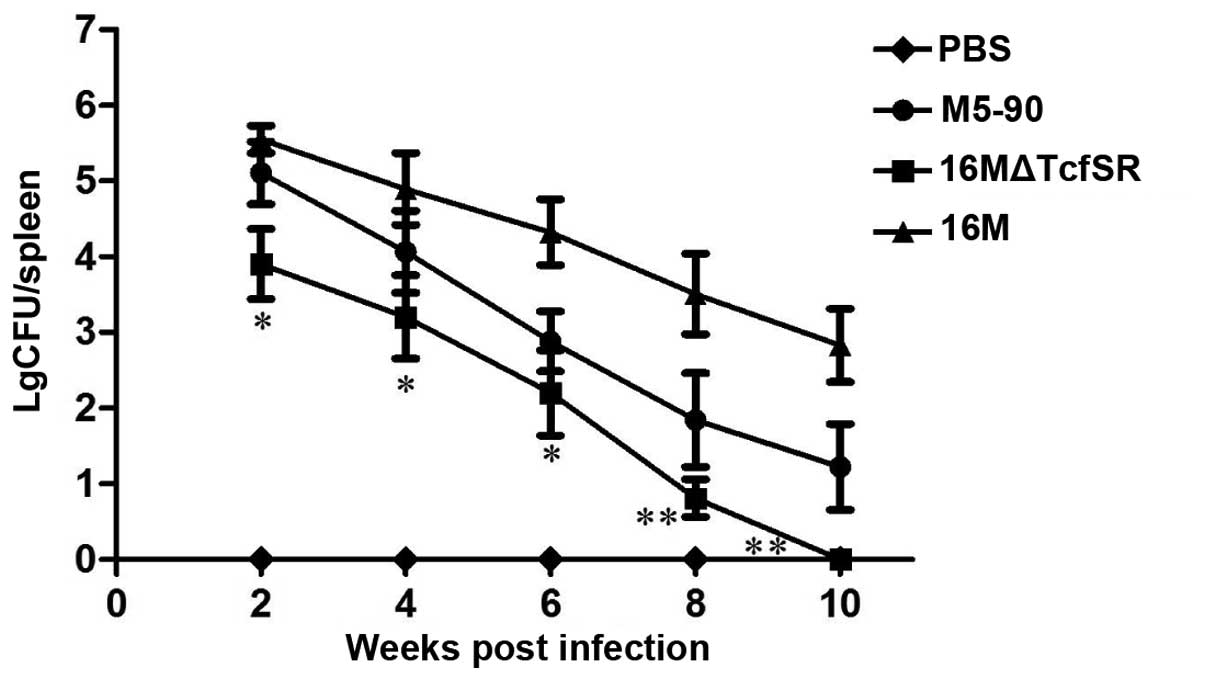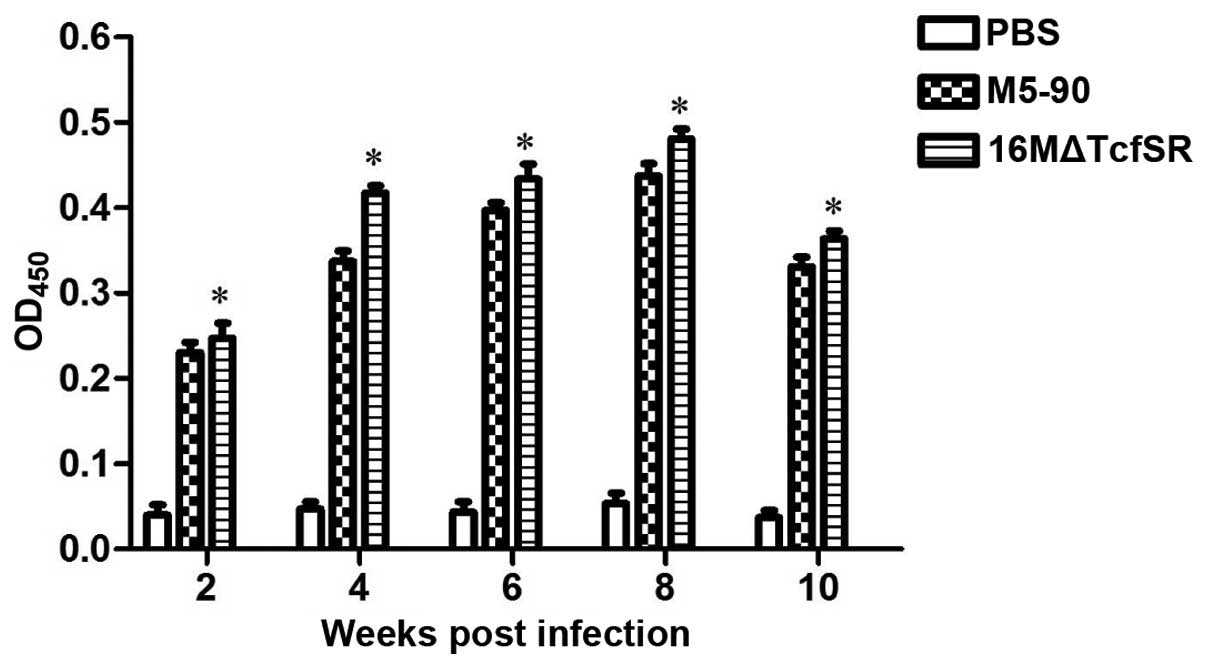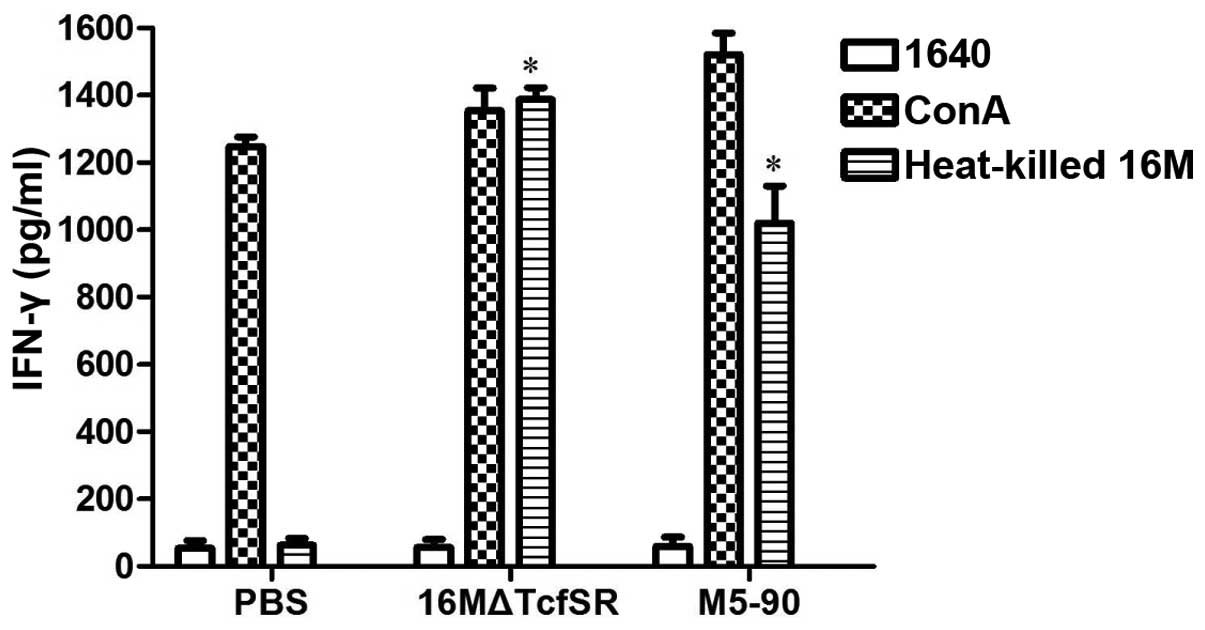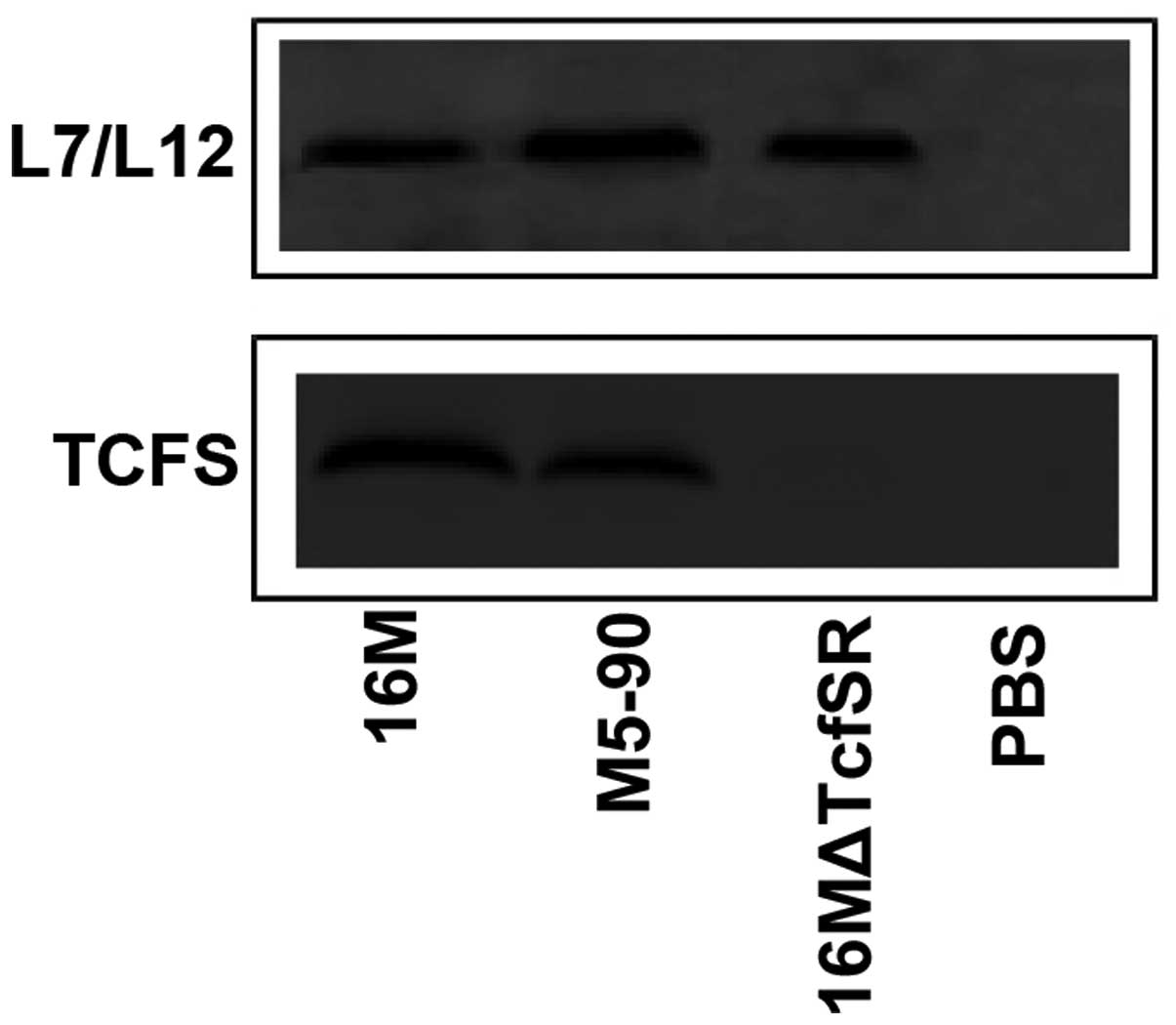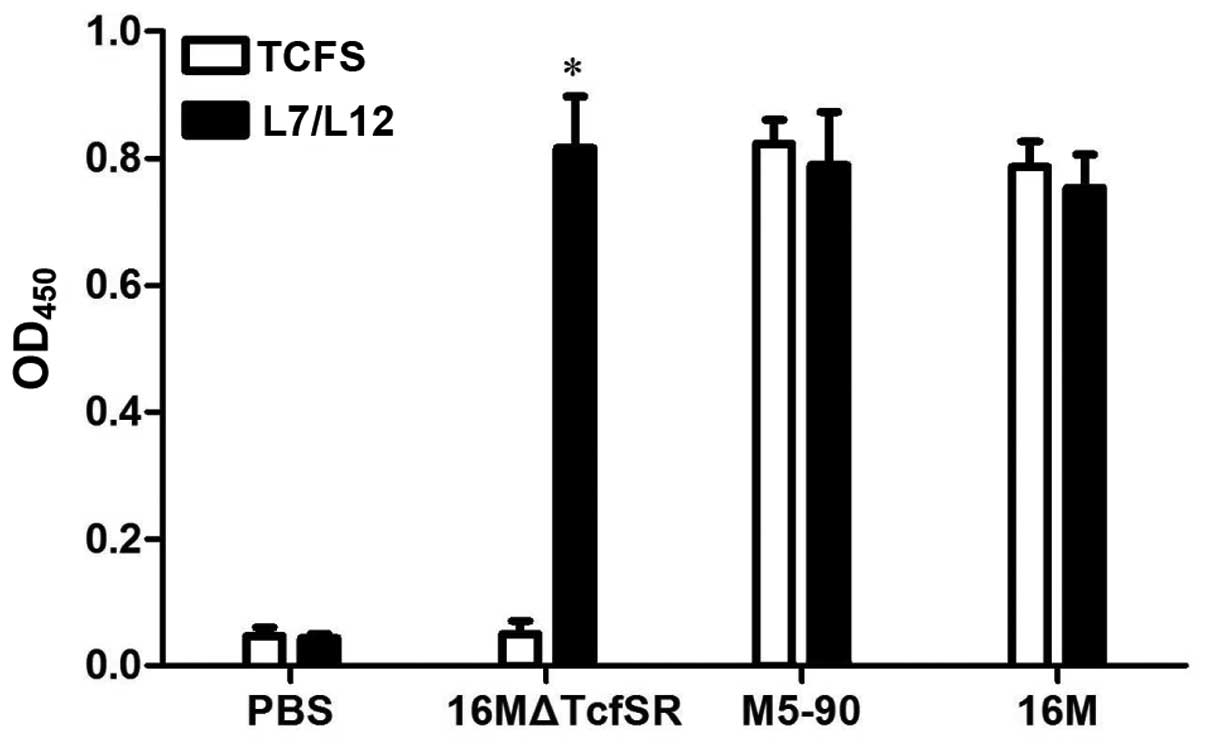|
1
|
Lacerda TL, Cardoso PG, Augusto de Almeida
L, et al: Inactivation of formyltransferase (wbkC) gene generates a
Brucella abortus rough strain that is attenuated in
macrophages and in mice. Vaccine. 28:5627–5634. 2010. View Article : Google Scholar : PubMed/NCBI
|
|
2
|
Pappas G, Akritidis N, Bosilkovski M and
Tsianos E: Brucellosis. N Engl J Med. 352:2325–2336. 2005.
View Article : Google Scholar : PubMed/NCBI
|
|
3
|
Elzer PH, Hagius SD, Davis DS, DelVecchio
VG and Enright FM: Characterization of the caprine model for
ruminant brucellosis. Vet Microbiol. 90:425–431. 2002. View Article : Google Scholar : PubMed/NCBI
|
|
4
|
Godfroid J, Cloeckaert A, Liautard JP, et
al: From the discovery of the Malta fever's agent to the discovery
of a marine mammal reservoir, brucellosis has continuously been a
re-emerging zoonosis. Vet Res. 36:313–326. 2005. View Article : Google Scholar : PubMed/NCBI
|
|
5
|
Hamdy ME, El-Gibaly SM and Montasser AM:
Comparison between immune responses and resistance induced in
BALB/c mice vaccinated with RB51 and Rev. 1 vaccines and challenged
with Brucella melitensis bv. 3. Vet Microbiol. 88:85–94.
2002. View Article : Google Scholar : PubMed/NCBI
|
|
6
|
Cosivi O and Corbel MJ: WHO consultation
on the development of new/improved brucellosis vaccines. 17
December 1997, Geneva, Switzerland. Biologicals. 26:361–363. 1998.
View Article : Google Scholar : PubMed/NCBI
|
|
7
|
Wang F, Hu S, Gao Y, Qiao Z, Liu W and Bu
Z: Complete genome sequences of Brucella melitensis strains
M28 and M5-90, with different virulence backgrounds. J Bacteriol.
193:2904–2905. 2011. View Article : Google Scholar : PubMed/NCBI
|
|
8
|
Viadas C, Rodríguez MC, Sangari FJ, Gorvel
JP, García-Lobo M and López-Goñi I: Transcriptome analysis of the
Brucella abortus BvrR/BvrS two-component regulatory system.
PLoS One. 5:e102162010. View Article : Google Scholar : PubMed/NCBI
|
|
9
|
Lavín JL, Binnewies TT, Pisabarro AG,
Ussery DW, García-Lobo M and Oguiza JA: Differences in
two-component signal transduction proteins among the genus
Brucella: Implications for host preference and pathogenesis.
Vet Microbiol. 144:478–483. 2010. View Article : Google Scholar : PubMed/NCBI
|
|
10
|
Wang Y, Chen Z, Qiao F, et al: Comparative
proteomics analysis reveal the virB of B. melitensis affects
expression of intracellular survival related proteins. PLoS One.
4:e53682009. View Article : Google Scholar : PubMed/NCBI
|
|
11
|
Hernández-Castro R, Verdugo-Rodríguez A,
Puente JL and Suárez-Güemes F: The BMEI0216 gene of Brucella
melitensis is required for internalization in HeLa cells.
Microb Pathog. 44:28–33. 2008. View Article : Google Scholar : PubMed/NCBI
|
|
12
|
Adone R, Ciuchini F, Marianelli C, et al:
Protective properties of rifampin-resistant rough mutants of
Brucella melitensis. Infect Immun. 73:4198–4204. 2005.
View Article : Google Scholar : PubMed/NCBI
|
|
13
|
Goel D and Bhatnagar R: Intradermal
immunization with outer membrane protein 25 protects Balb/c mice
from virulent B. abortus 544. Mol Immunol. 51:159–168. 2012.
View Article : Google Scholar : PubMed/NCBI
|
|
14
|
Wang Y, Bai Y, Qu Q, et al: The 16MΔvjbR
as an ideal live attenuated vaccine candidate for differentiation
between Brucella vaccination and infection. Vet Microbiol.
151:354–362. 2011. View Article : Google Scholar : PubMed/NCBI
|
|
15
|
Zhang J, Guo F, Chen C, et al: Brucella
melitensis 16MΔhfq attenuation confers protection against
wild-type challenge in BALB/c mice. Microbiol Immunol. 57:502–510.
2013.PubMed/NCBI
|
|
16
|
Liu B, Teng D, Wang X, Yang Y and Wang J:
Expression of the soybean allergenic protein P34 in Escherichia
coli and its indirect ELISA detection method. Appl Microbiol
Biotechnol. 94:1337–1345. 2012. View Article : Google Scholar : PubMed/NCBI
|
|
17
|
Schurig GG, Sriranganathan N and Corbel
MJ: Brucellosis vaccines: past, present and future. Vet Microbiol.
90:479–496. 2002. View Article : Google Scholar : PubMed/NCBI
|
|
18
|
Davis DS and Elzer PH: Brucella
vaccines in wildlife. Vet Microbiol. 90:533–544. 2002. View Article : Google Scholar : PubMed/NCBI
|
|
19
|
Berkelman RL: Human illness associated
with use of veterinary vaccines. Clin Infect Dis. 37:407–414. 2003.
View Article : Google Scholar : PubMed/NCBI
|
|
20
|
Ashford DA, di Pietra J, Lingappa J, et
al: Adverse events in humans associated with accidental exposure to
the livestock brucellosis vaccine RB51. Vaccine. 22:3435–3439.
2004. View Article : Google Scholar : PubMed/NCBI
|
|
21
|
Ko J and Splitter GA: Molecular
host-pathogen interaction in brucellosis: current understanding and
future approaches to vaccine development for mice and humans. Clin
Microbiol Rev. 16:65–78. 2003. View Article : Google Scholar : PubMed/NCBI
|
|
22
|
Golding B, Scott DE, Scharf O, et al:
Immunity and protection against Brucella abortus. Microbes
Infect. 3:43–8. 2001. View Article : Google Scholar : PubMed/NCBI
|
|
23
|
Ding JB, Cheng JS, Mu W, Mao KR, Zhang EL
and Jiang YW: Construction of a WboA-deficient Brucella suis
S2 strain and its immune effect. Zhongguo Nong Ye Ke Xue.
8:2448–2453. 2008.(In Chinese).
|
|
24
|
Sathiyaseelan J, Goenka R, Parent M, et
al: Treatment of Brucella-susceptible mice with IL-12
increases primary and secondary immunity. Cell Immunol. 243:1–9.
2006. View Article : Google Scholar : PubMed/NCBI
|
|
25
|
Jiménez de Bagüés MP, Marín CM, Blasco JM,
Moriyón I and Gamazo C: An ELISA with Brucella
lipopolysaccharide antigen for the diagnosis of B.
melitensis infection in sheep and for the evaluation of
serological responses following subcutaneous or conjunctival B.
melitensis strain Rev 1 vaccination. Vet Microbiol. 30:233–241.
1992. View Article : Google Scholar : PubMed/NCBI
|















